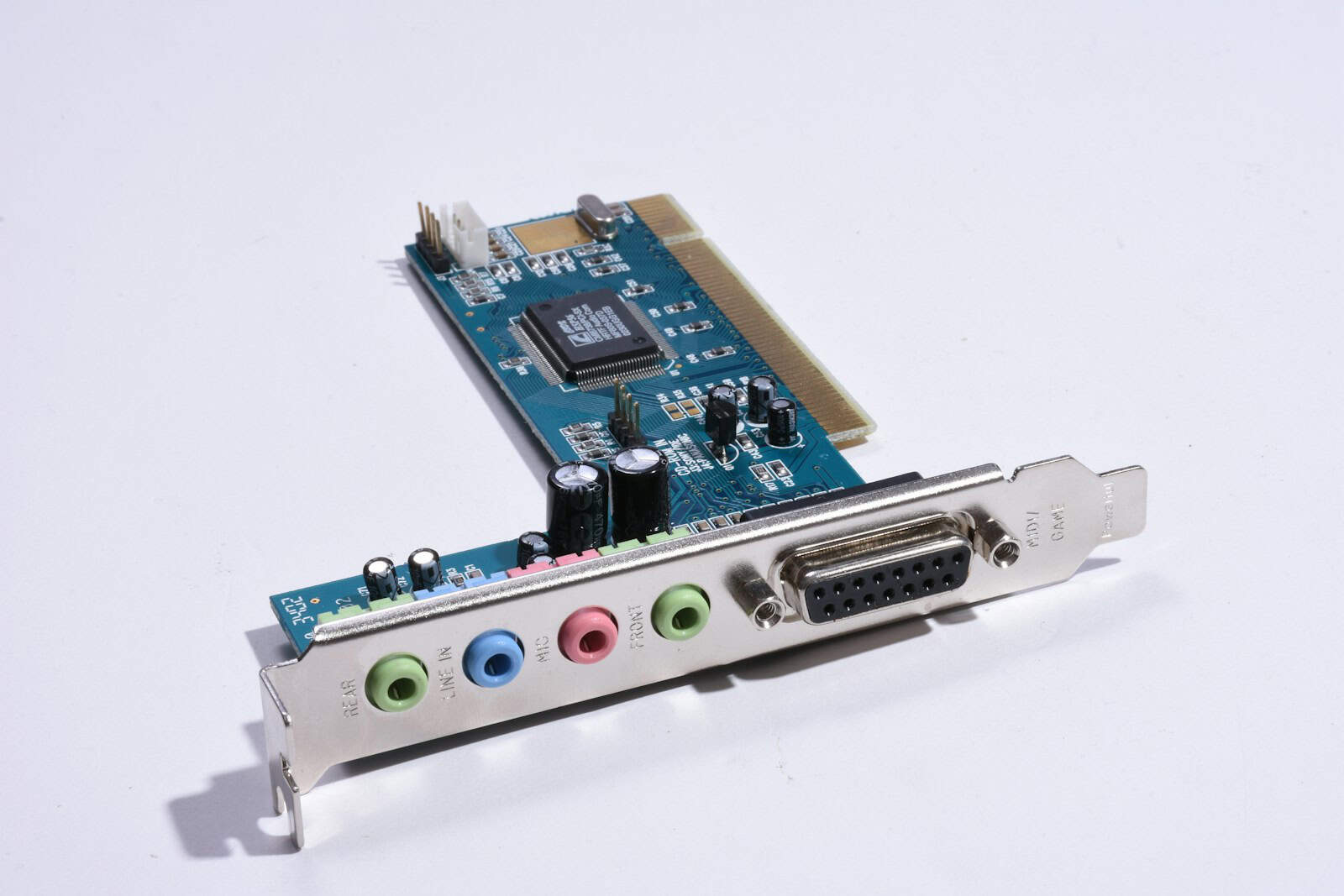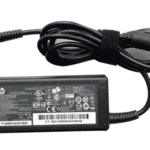Modern desktop computers are highly modular machines, and one of the easiest ways to upgrade their capabilities is by installing add-on cards. Whether you’re enhancing your system’s performance, expanding connectivity, or unlocking new features, add-on cards offer a targeted, cost-effective solution. These compact circuit boards plug into your motherboard—typically via PCI Express (PCIe) slots—and can instantly modernize or customize your PC without replacing the entire system.
From blazing-fast USB 3.2 expansion cards to NVMe storage adapters, there’s an add-on card for nearly every need. This kind of flexibility is especially valuable as technology evolves. Want to add Wi-Fi 6E support to your old PC? There’s a card for that. Need to stream your gameplay? Capture cards do the job. Whether you’re a gamer, content creator, IT professional, or casual user, expansion cards can make your system smarter, faster, and more capable.
Common Types of Add-On Cards and Their Uses
Here’s a quick breakdown of popular add-on card categories, what they do, and who they’re for:
| Card Type | Primary Function | Ideal For |
|---|---|---|
| Graphics Card (GPU) | Handles visual output, boosts gaming/video performance | Gamers, video editors |
| Sound Card | Enhances audio input/output quality | Musicians, audio producers |
| Network Card | Adds or upgrades Ethernet/Wi-Fi connectivity | Online gamers, streamers, enterprise |
| Capture Card | Records video from consoles/cameras | Content creators, live streamers |
| Storage Controller | Adds SATA/NVMe ports for more drives | Servers, NAS builders, data hoarders |
| USB Expansion Card | Adds USB-A, USB-C, or Thunderbolt ports | Peripheral-heavy users, legacy PCs |
| RAID Controller | Manages drive arrays with redundancy or speed setups | Enterprise, prosumers, sysadmins |
| Bluetooth/Wi-Fi Combo | Enables wireless peripherals and internet access | Home offices, minimalist setups |
PCIe Explained: What You Need To Know
Most modern add-on cards use PCI Express (PCIe) slots, which vary in size and bandwidth:
- x1: Small bandwidth, used for sound/network/USB cards
- x4: Medium bandwidth, common for capture/storage cards
- x16: High bandwidth, required for GPUs and some high-speed SSD cards
Each slot type supports a different number of “lanes”—data pathways between the card and the CPU. Higher lane counts equal better performance but also require more motherboard resources. Always check your motherboard manual to confirm slot compatibility, lane distribution, and power availability.
Key Considerations Before Buying
- Slot Availability: Make sure you have an open PCIe slot of the right size.
- Power Supply: Some cards (especially GPUs and storage controllers) need dedicated power.
- Case Space: Full-size cards might not fit in compact or small-form-factor cases.
- OS Support: Windows, macOS, and Linux support varies by card and driver availability.
- Heat Management: Performance cards often need active or passive cooling solutions.
Why Add-On Cards Still Matter
With the rise of USB-C hubs, Thunderbolt docks, and external accessories, some might think internal add-on cards are a relic of the past. In reality, they’re more relevant than ever. Internal cards offer:
- Better performance (lower latency, higher bandwidth)
- Cleaner cable management
- Reliable power delivery
- Long-term scalability for desktop builds
Whether you’re upgrading an older desktop or building a workstation from scratch, add-on cards are a smart investment. They let you evolve your system gradually—adding new ports, increasing storage, or boosting performance—without overhauling your entire setup.
Let’s dive into the best add-on card options currently available.
Best Add-On Cards
Add-on cards are expansion devices that plug into your computer’s motherboard to add new features. These small circuit boards can upgrade your PC with better sound, faster networking, or extra USB ports. Our list includes the top-performing add-on cards for various needs, with options for different budgets and system requirements.
JMT PCI-E Expansion Adapter
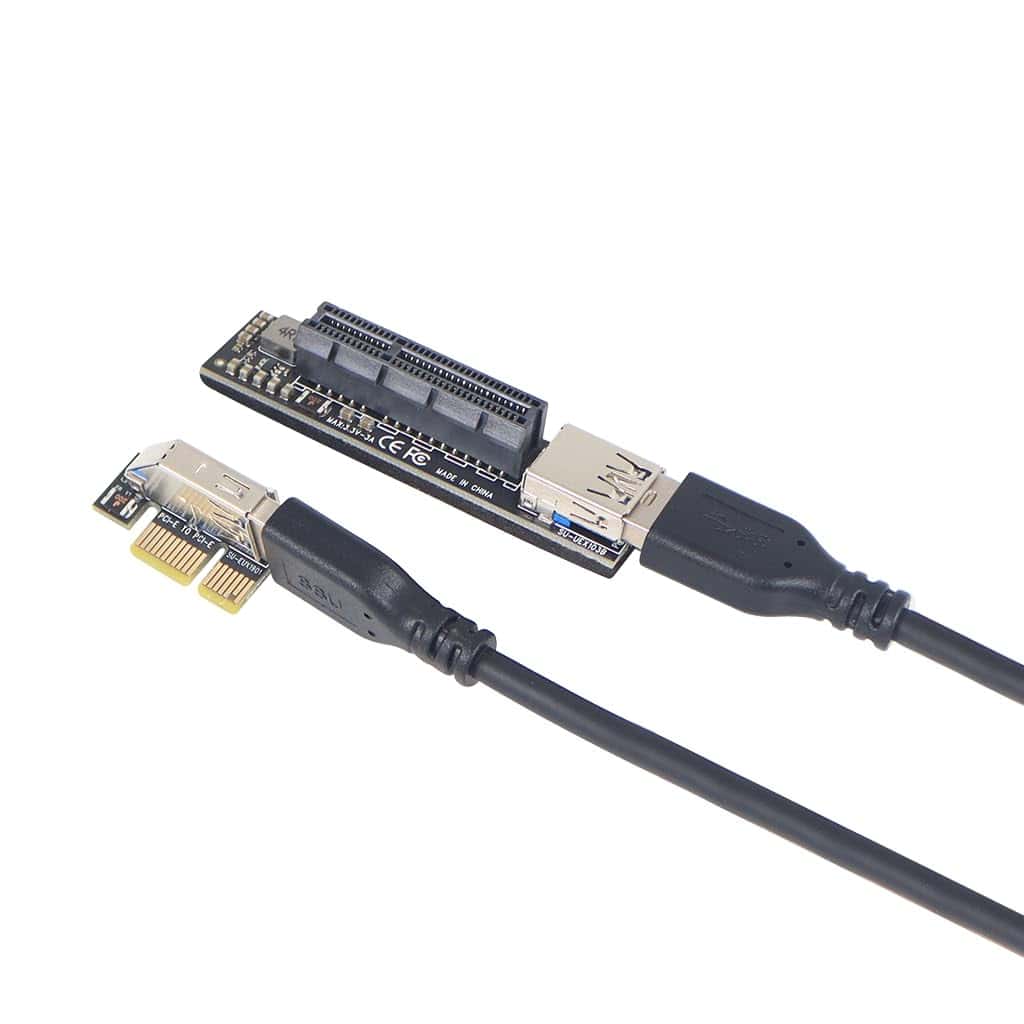
This PCI Express x1 to x4 adapter is ideal for users who need to expand their motherboard’s connectivity without complex installation requirements.
Pros
- Space-saving 90-degree right angle design
- No external power needed for most devices
- Plug and play with no driver installation
Cons
- Not suitable for high-power devices like GPUs
- Limited customer reviews available
- May not fit in all case configurations
The JMT PCI-E expansion adapter offers a simple solution for desktop users looking to add more components to their system. It converts a PCI-E x1 slot into a more versatile x4 slot using USB 3.0 technology. This makes it perfect for adding cards that need more bandwidth than a standard x1 slot can provide.
Installation couldn’t be easier with this adapter. Users won’t need to fumble with drivers or power connections for most devices. The adapter includes gold-plated contacts that improve connectivity and extend the lifespan of the product. The package includes the main adapter board, a PCI-E 1X riser, and a USB 3.0 cable.
The space-saving design is particularly useful in compact systems. The 90-degree right angle feature helps users manage cable routing and component placement more effectively. At only 2.08 ounces, this lightweight adapter won’t put stress on the motherboard. The adapter works with Windows, macOS, and Linux systems, making it versatile enough for most computing environments.
StarTech USB PCIe Card

This StarTech PCIe add-on card offers an excellent upgrade path for anyone needing fast USB-A and USB-C ports in their desktop computer.
Pros
- Provides both USB-A and USB-C ports at 10Gbps speeds
- Includes SATA power connector for high-power devices
- Works with Windows, macOS, and Linux systems
Cons
- Requires a free SATA power connector for full functionality
- Some users report compatibility issues with specific devices
- Higher price point than basic USB expansion cards
The StarTech 2-Port PCIe Card adds one USB-C and one USB-A port to any computer with an available PCIe slot. Each port supports the USB 3.1 Gen 2 (or USB 3.2 Gen 2×1) standard, delivering speeds up to 10Gbps. This makes it perfect for connecting external SSDs, video capture devices, and other high-bandwidth peripherals.
Power capabilities set this card apart from basic add-on options. With the included SATA power connector, it can supply up to 15W through the USB-C port and 4.5W via the USB-A port. This extra power makes it suitable for external drives and other power-hungry devices that might not work properly with standard motherboard-powered USB ports.
Compatibility is broad with support for Windows, macOS, and Linux operating systems. The card includes both standard and low-profile brackets, fitting easily in full-sized PCs or compact systems. For users with older devices, the card maintains backward compatibility with USB 3.0 and 2.0 peripherals, eliminating the need to replace existing equipment.
Performance benefits extend beyond just the 10Gbps interface speed. The card supports UASP (USB Attached SCSI Protocol) for enhanced data transfer when used with compatible devices. This protocol can boost read speeds by up to 70% and write speeds by 40% compared to standard USB 3.1, while also reducing processor load.
Cablecc SATA Express Adapter
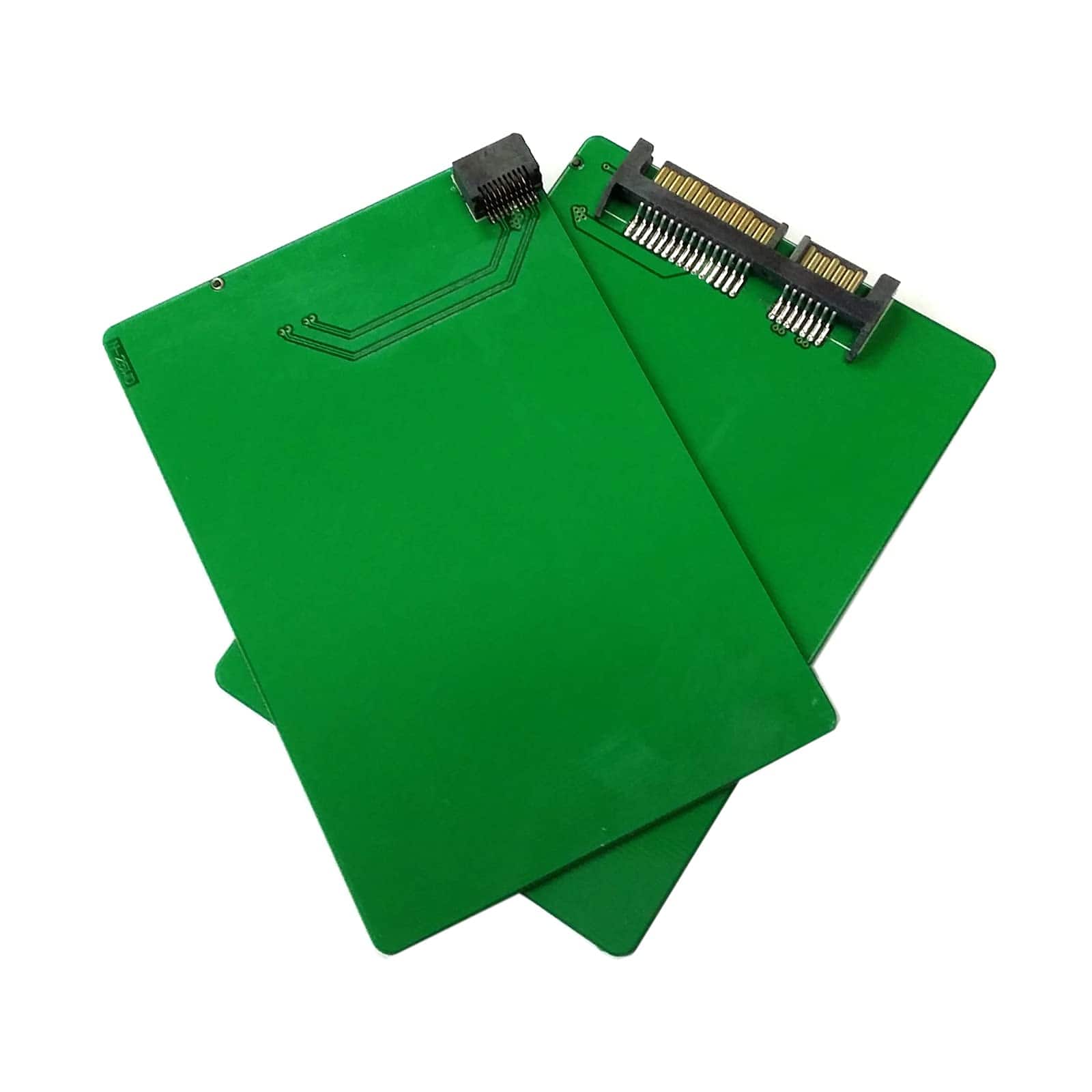
This adapter card is a solid choice for anyone needing to convert SFF-8784 hard drives to standard SATA for use in laptops or desktop computers.
Pros
- Enables use of specialized SFF-8784 drives with standard SATA connections
- Compatible with various drives including WD5000MPCK and WD Black SSHD
- Supports fast 6Gbps data transfer rates
Cons
- May not fit properly in all external drive enclosures
- No built-in mechanism to secure the drive to the adapter
- Limited use case for most everyday computer users
The Cablecc adapter card solves a specific problem for users with SFF-8784 hard drives. These specialized drives aren’t compatible with standard computer connections, but this adapter changes that. It converts the unique SFF-8784 SATA Express connection to a standard SATA 3.0 interface that works with most laptops and desktop computers.
Many users have successfully used this adapter to recover data from old laptop hard drives. The card works particularly well with 5mm ultra-slim hard disks and SSDs from Western Digital, including the WD5000MPCK and WD Black SSHD models. Its compact size matches standard 2.5-inch drive dimensions, making it ideal for data recovery projects or repurposing old drives.
The adapter delivers 6Gbps transfer speeds, ensuring fast data movement between your drive and computer. However, some users report issues fitting the adapter in external enclosures. The adapter also lacks mounting hardware to secure drives firmly in place. Despite these minor drawbacks, it performs its core function well, making it a valuable tool for anyone needing to access data from these specialized drive formats.
Supermicro NVMe Add-On Card
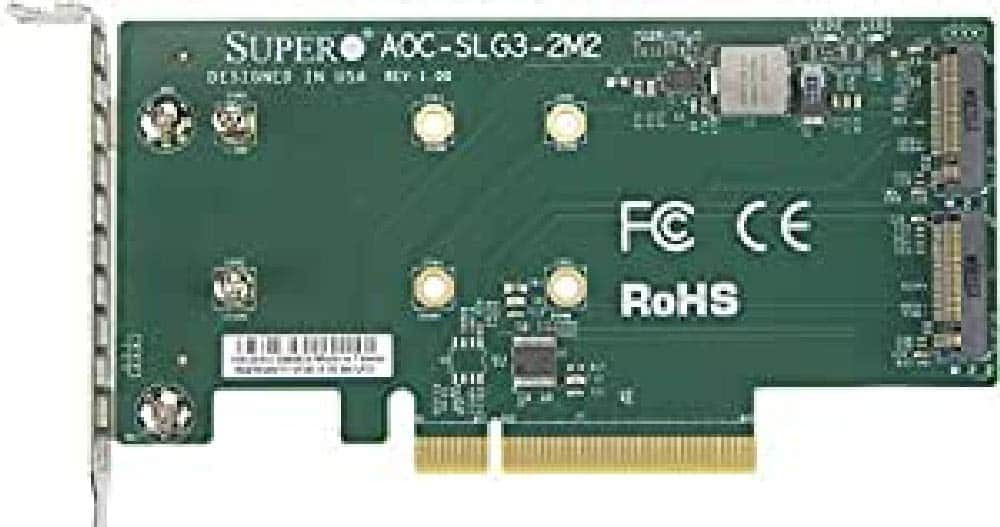
This PCIe add-on card is a solid option for users who need to add NVMe storage to compatible server systems with bifurcation support.
Pros
- Supports two NVMe SSDs simultaneously
- Works well with compatible server motherboards
- Good value compared to higher-priced alternatives
Cons
- Requires PCIe bifurcation support
- Limited compatibility with consumer motherboards
- No built-in cooling system
The Supermicro AOC-SLG3-2M2 expands storage options for server systems. It lets users install two NVMe SSDs in a single PCIe slot, which boosts overall storage capacity without taking up multiple slots. Many users report successful installations in Dell servers and SuperMicro systems with the right configuration.
Compatibility is the biggest concern with this card. It specifically requires PCIe bifurcation support, which splits a single PCIe slot into multiple lanes. Several reviewers mention attempted installations on consumer motherboards from Asus, MSI, and Asrock with disappointing results. Server systems tend to have better success rates.
Performance meets expectations when properly installed. The card delivers the full speed potential of NVMe drives, especially when used in PCIe x8 slots. Some users even run their drives in RAID configurations for additional performance gains. The card’s simple design lacks active cooling, so users with high-performance SSDs might want to consider adding heatsinks to prevent thermal throttling.
cablecc mSATA to Micro SATA Adapter
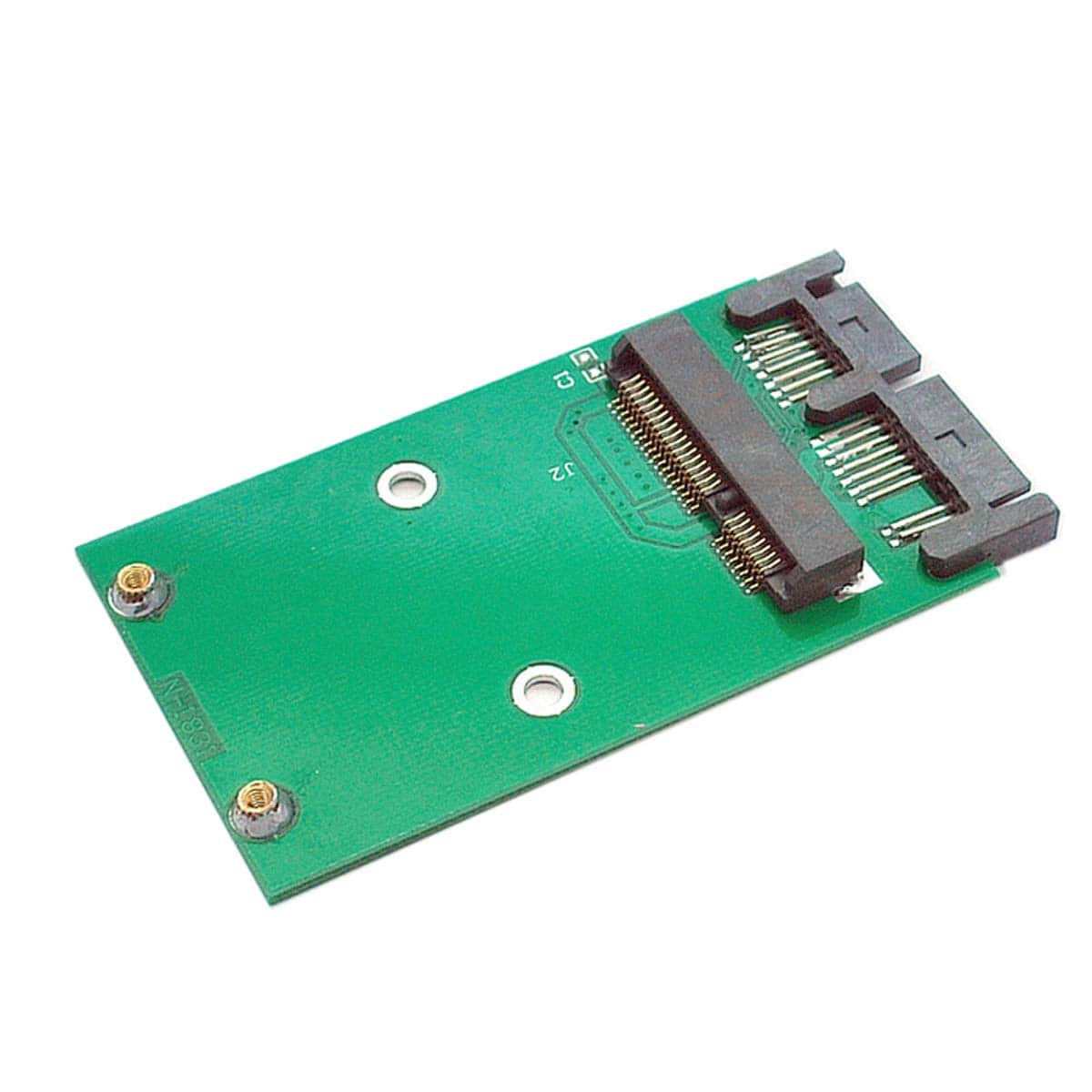
This adapter is a smart solution for anyone looking to upgrade their older laptop with a faster mSATA SSD while working with legacy 1.8″ micro SATA connections.
Pros
- Revitalizes older laptops with significant speed improvements
- Compatible with multiple brands of mSATA SSDs
- Simple plug-and-play functionality
Cons
- Only works with SATA SSDs, not NVMe/PCIe drives
- Limited to devices with 1.8″ micro SATA interfaces
- Requires some technical knowledge for installation
The cablecc adapter serves as a bridge between newer mSATA SSDs and older 1.8″ micro SATA connections. Users report dramatic performance improvements, with boot times dropping from minutes to seconds after installation. This small but mighty adapter breathes new life into aging devices like HP EliteBooks, Fujitsu laptops, and other systems with 1.8″ drive bays.
Measuring just 3.94 x 3.94 x 0.39 inches, this adapter fits perfectly in the intended drive slots without any wobbling or alignment issues. The card fully complies with 1.8″ micro SATA specifications. It works with Intel, Samsung, and Toshiba mSATA SSDs, giving users flexibility when choosing storage options.
Setup is straightforward for those with basic computer upgrade experience. Many customers have used this adapter to replace expensive, hard-to-find proprietary drives with more affordable mainstream mSATA SSDs. The adapter creates a perfect connection between the two different technologies. For less than the cost of a specialized replacement drive, users can enjoy faster performance and higher capacity storage in their older laptops.
HP Elitedesk Card Reader Add-on
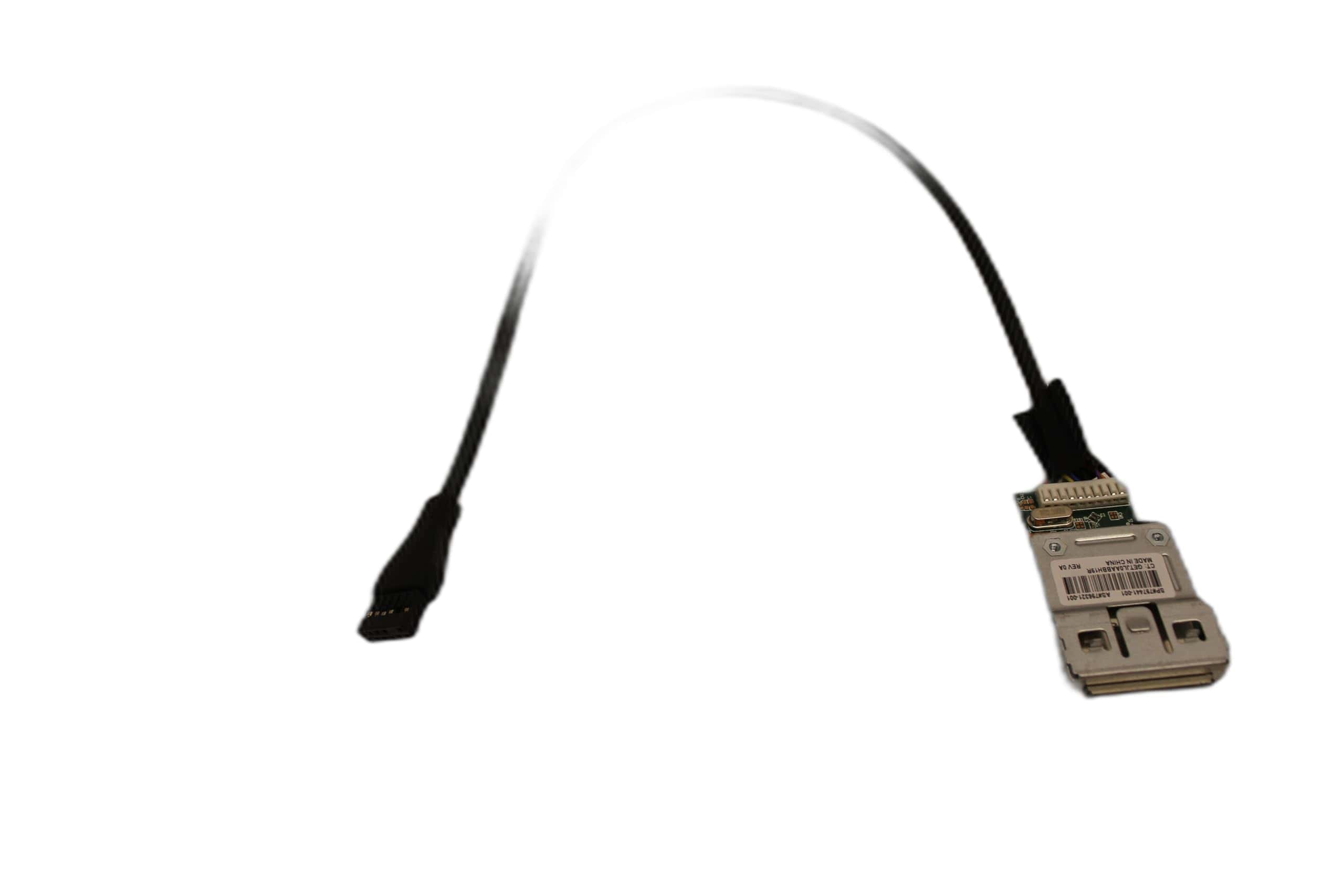
This HP card reader add-on board offers simple plug-and-play functionality for Elitedesk 800 G2 SFF computers needing expanded media access capabilities.
Pros
- Easy plug-and-play installation
- Compatible with both USB Type-C and Type-A
- Perfect fit for Elitedesk 800 G2 SFF models
Cons
- Limited to specific HP computer models
- Only one customer review available
- Relatively high price point for a card reader
The Advance Solution card reader add-on board serves as a direct replacement part for HP Elitedesk 800 G2 SFF computers. Its silver and black design matches the original equipment perfectly. Users will appreciate the straightforward installation process that requires no special tools or software configuration.
Connectivity options include both USB Type-C and Type-A ports, making this add-on versatile for various media cards and storage devices. The board measures a compact 6 x 4 x 1 inches, ensuring it fits properly in the designated space within compatible systems. This size allows for easy installation without crowding internal components.
The board carries part numbers 797441-001 and 796321-001, which helps buyers verify compatibility with their specific systems before purchase. While the single 5-star rating suggests customer satisfaction, potential buyers should note that this product is designed exclusively for the Elitedesk 800 G2 SFF model. Those looking to upgrade their HP workstations with reliable media reading capabilities will find this add-on meets their needs effectively.
StarTech USB 3.2 PCIe Card
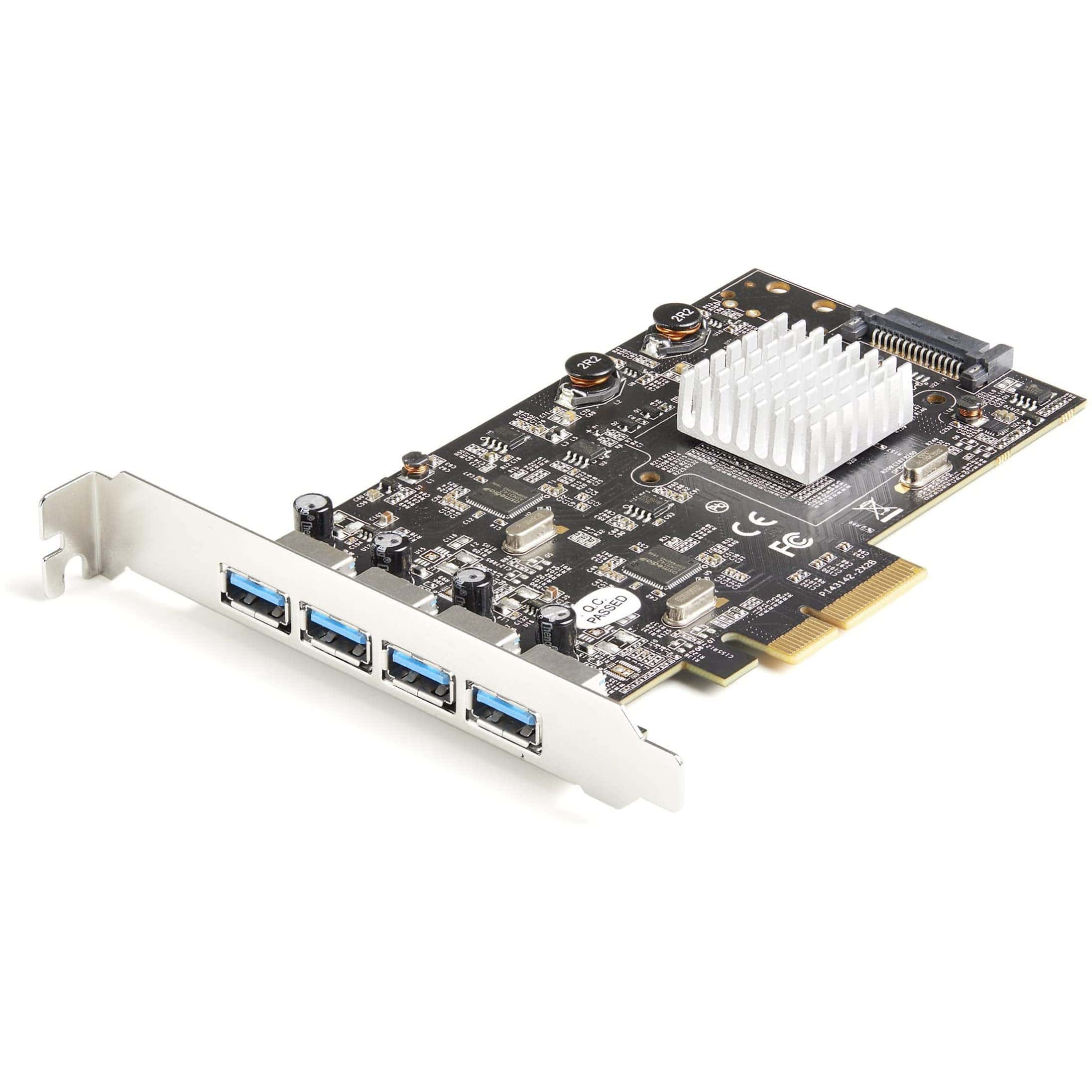
The StarTech 4-Port USB PCIe Card offers impressive 10Gbps speeds and broad compatibility, making it a solid choice for users needing to expand their USB connectivity.
Pros
- High performance with 10Gbps per port using dual controllers
- Compatible with Windows, Mac, and Linux systems
- Includes optional SATA power connector for additional port power
Cons
- Some users report inconsistent port reliability
- Takes up a PCIe x4 slot which might be limited on some systems
- Slightly more expensive than basic USB expansion cards
This expansion card adds four USB 3.2 Gen 2 Type-A ports to desktop computers through a PCIe x4 slot. Each port delivers speeds up to 10Gbps, making it ideal for connecting external storage devices like SSDs and NVMe drives. The dual ASM3142 controllers provide a total bandwidth of 20Gbps across all ports, allowing multiple high-speed devices to operate simultaneously.
Setup is straightforward with plug-and-play functionality on most modern operating systems. Windows 8 and newer systems automatically install drivers, eliminating the need for additional software. The card also supports older USB 3.0 and 2.0 devices, providing excellent backward compatibility.
Power delivery is a standout feature. The optional SATA power connector supplies additional power when the motherboard can’t provide enough electricity for power-hungry devices. Each port can deliver up to 4.5W ([email protected]), which helps when connecting devices that need more power than standard USB ports offer. This makes the card especially useful for external hard drives and other accessories that require significant power.
XIWAI USB 3.0 to mSATA Adapter
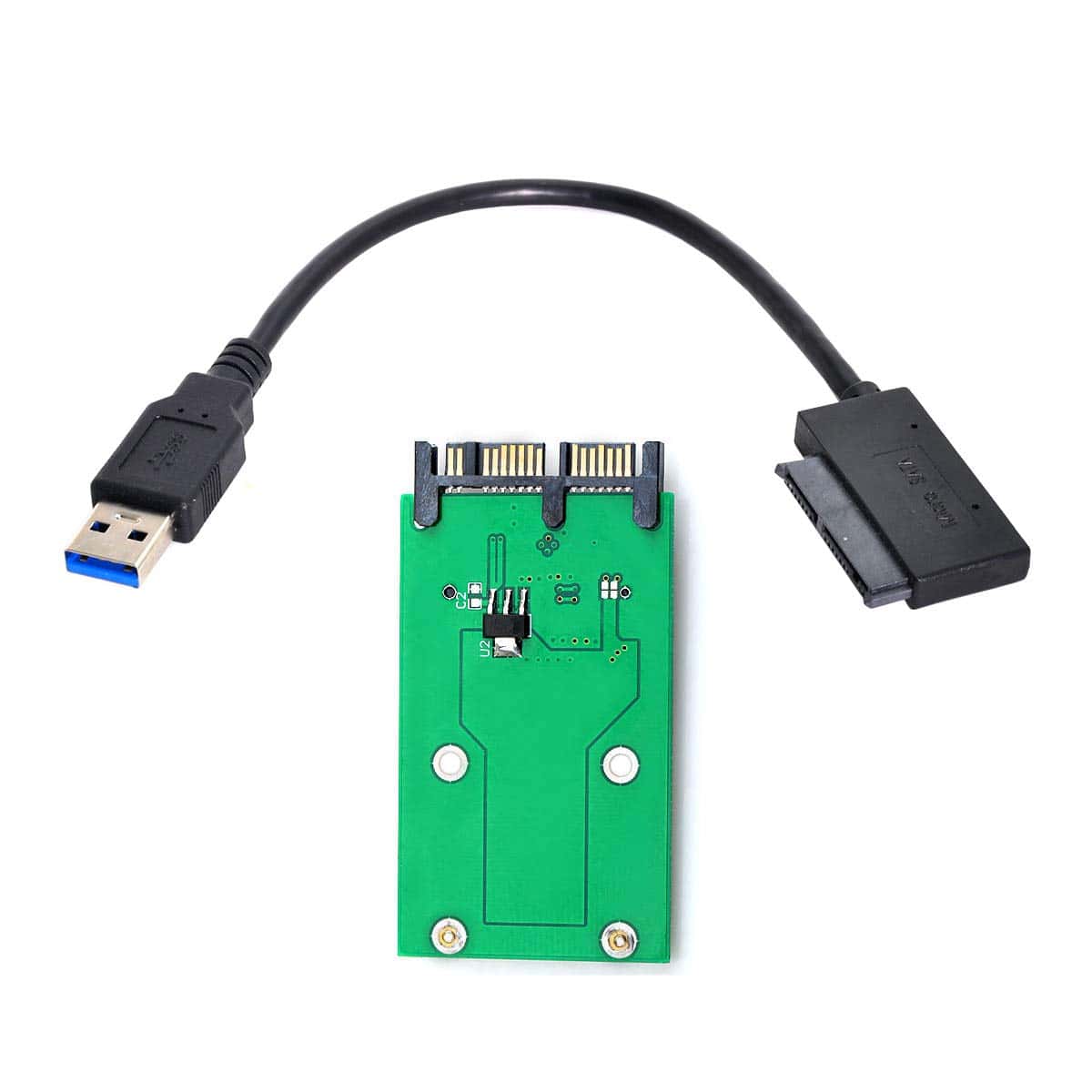
This adapter card offers excellent compatibility with multiple SSD types at a reasonable price point for anyone looking to repurpose old drives.
Pros
- Supports both mSATA and 1.8″ Micro SATA SSDs
- USB 3.0 provides fast 5 Gbps data transfer speeds
- Simple plug-and-play setup with included cable
Cons
- Lacks mounting hardware for secure installation
- Limited product documentation
- May require extra padding for proper fit
The XIWAI adapter card bridges the gap between newer systems and older storage formats. It connects mSATA 50Pin SSDs and 1.8″ Micro SATA 7+9 16pin drives to any computer with a USB port. This simple solution helps users repurpose older drives instead of discarding them.
Setup is straightforward with the included USB cable. The adapter supports USB 3.0’s 5 Gbps transfer rate, making it suitable for both data recovery and creating external storage drives. The compact size (3.94 x 3.94 x 0.39 inches) means it can fit in tight spaces, though some users note the need for extra padding to ensure a secure connection.
Users report success using this adapter for various tasks. Some have upgraded older laptops by connecting new SSDs, while others use it to access data from drives removed from outdated devices. One limitation is the lack of mounting hardware, requiring DIY solutions for permanent installations. The green PCB board design is functional but basic, focusing on utility rather than aesthetics.
MSI Thunderbolt 4 PCIe Card
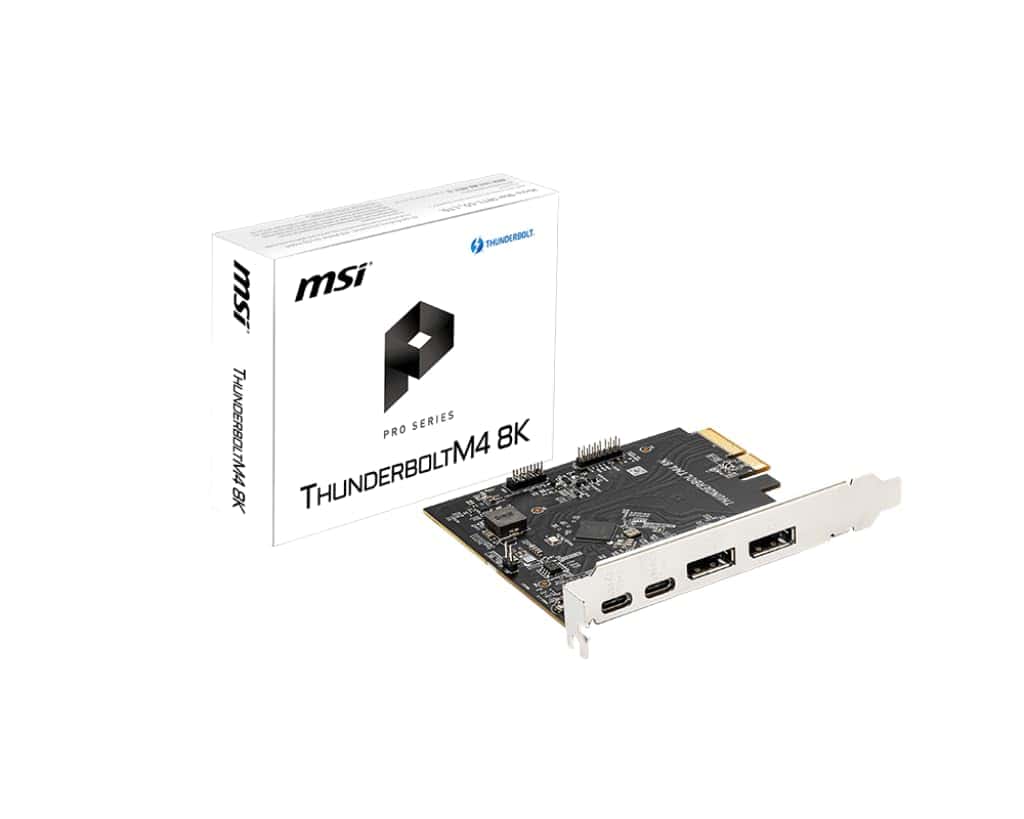
The MSI Thunderbolt 4 card offers excellent connectivity options at a competitive price, though setup challenges may frustrate some users.
Pros
- Fast 40Gbps data transfer rate
- Supports up to 8K display resolution
- Compatible with multiple operating systems
Cons
- Complicated installation process
- Limited customer reviews
- Requires specific motherboard support
This add-on card brings Thunderbolt 4 technology to compatible systems through a PCIe slot. Users gain access to two Thunderbolt 4 ports with USB-C connectors that support extremely fast data transfers at 40Gbps. The card includes DisplayPort inputs that enable connecting high-resolution monitors up to 8K, making it suitable for professionals working with detailed visual content.
Setup requires more than just plugging the card in. Users must connect DisplayPort cables from their graphics card to the add-on card’s inputs. BIOS settings also need adjustment to enable Thunderbolt functionality. These extra steps explain why some buyers report difficulty getting the card working properly.
MSI designed this card to work with Windows 10, Linux, and macOS systems. The daisy-chaining feature lets users connect up to six compatible devices through a single Thunderbolt port. At a lower price point than many competing options, this card offers good value for those who need Thunderbolt 4 connectivity and are willing to work through the installation process.
StarTech.com 2-Port USB PCIe Card
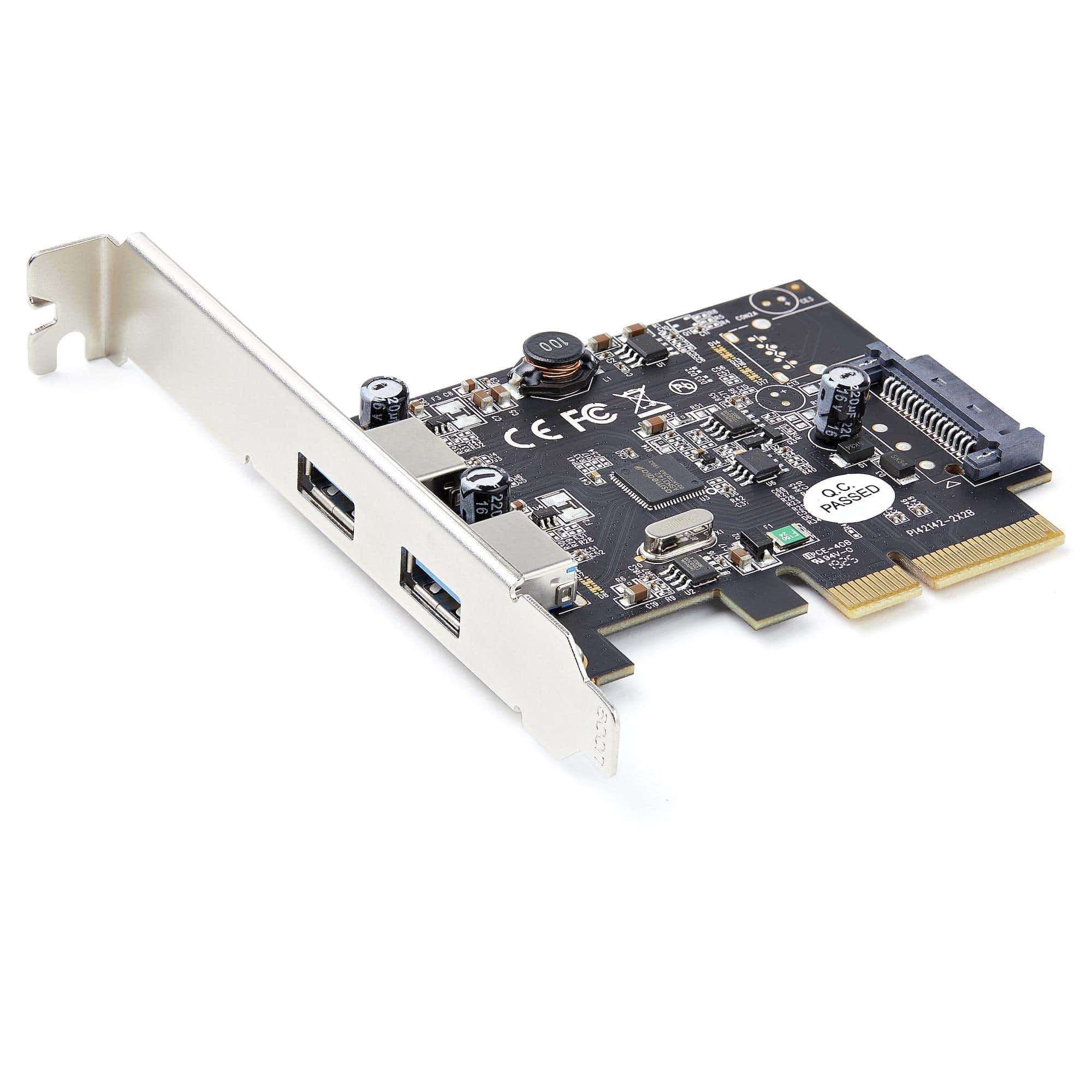
This high-performance USB expansion card offers a reliable solution for users needing additional USB ports with faster speeds than their current system provides.
Pros
- Delivers 10Gbps per port for fast data transfers
- Compatible with Windows, Linux, and macOS systems
- Includes both full and low-profile brackets
Cons
- Requires SATA power connection for full functionality
- Higher price point than standard USB 3.0 cards
- Some users report inconsistent speeds
The StarTech USB PCIe card adds two high-speed USB 3.1/3.2 Gen 2 Type-A ports to your computer. Using the ASMedia ASM3142 controller, it connects through a PCIe 3.0 x2 interface to deliver speeds up to 10Gbps per port. This makes it perfect for connecting external drives, especially SSDs where the faster speeds are noticeable.
Installation is straightforward with most systems. Windows 8 and newer systems will automatically install the drivers. The card comes with both full-height and low-profile brackets, making it suitable for standard desktop PCs and smaller form-factor systems. This flexibility is helpful for users with space constraints.
Power delivery is an important feature of this card. It includes a SATA power connector that supplies extra power to the USB ports when needed. Each port can deliver up to 4.5W (5V at 0.9A), which is enough for most USB devices. The card also supports UASP (USB Attached SCSI Protocol), which improves performance when using compatible storage devices like external SSDs.
Users report good results when using this card for specialized purposes. Some have used it to connect external RAID enclosures, while others find it useful for audio equipment where clean power and minimal interference are important. The card’s solid build quality and well-designed layout help minimize signal loss between the controller chip and the USB ports.
YEELIYA PCIe USB Expansion Card
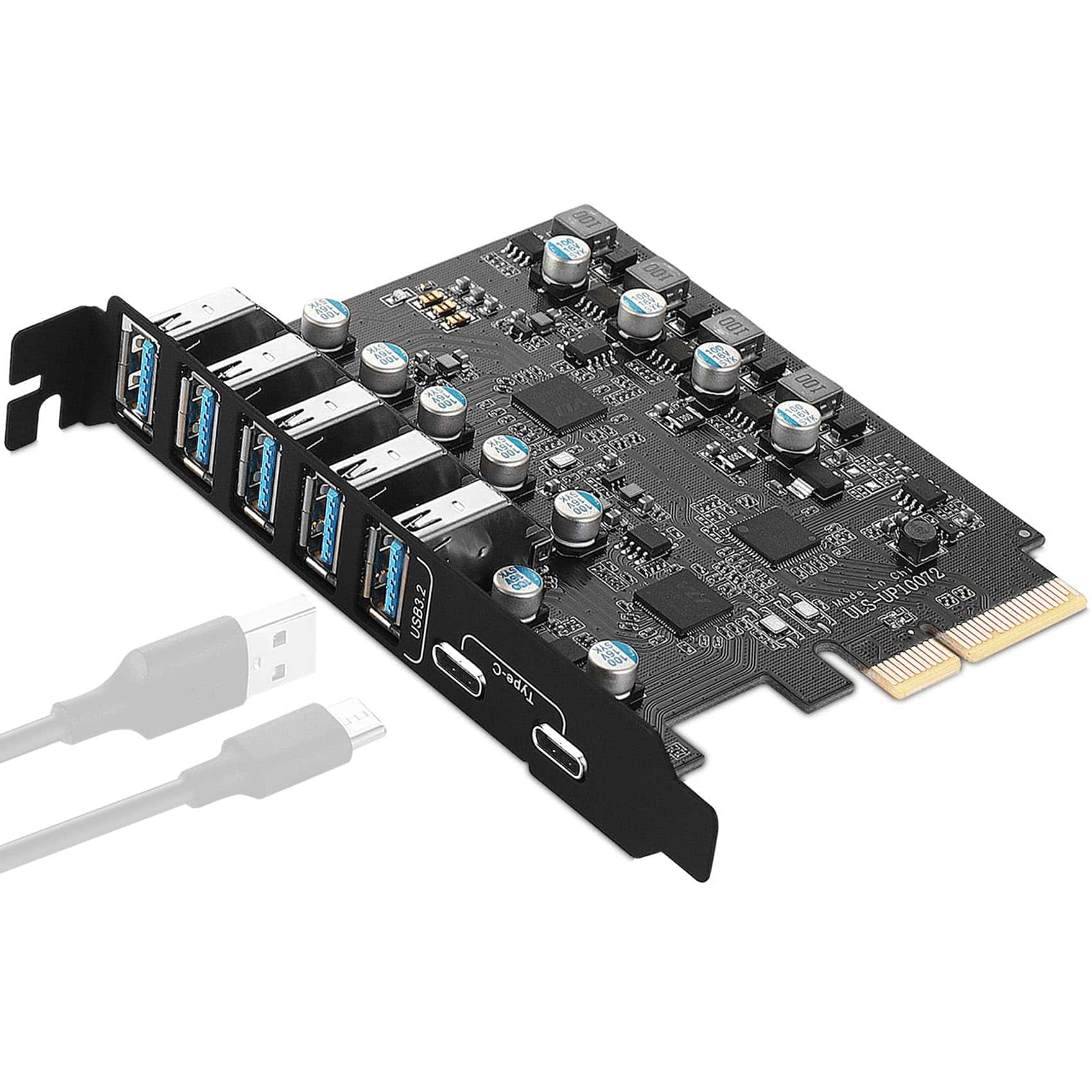
This USB expansion card offers a decent way to add extra ports to your PC, but mixed reviews suggest it may not work with all systems.
Pros
- Adds 7 USB ports (2 USB-C and 5 USB-A) in one installation
- Fast 10Gbps data transfer speed
- Compatible with multiple operating systems
Cons
- May require external power to avoid system crashes
- Some users report compatibility issues with certain motherboards
- Does not support display conversion through USB ports
The YEELIYA PCIe USB Expansion Card connects to your computer’s PCI Express slot to add seven USB ports. This solves the problem of limited USB connections on many desktop computers. The card features five USB-A ports and two USB-C ports, making it useful for connecting keyboards, mice, phones, and other devices.
Speed is a key feature of this expansion card. It offers up to 10Gbps transfer rates, which is 20 times faster than older USB 2.0 connections. This lets users move large files like photos and videos in seconds. The card works with both old and new USB devices, supporting USB 2.0, 3.0, and 3.1 standards.
Installation seems straightforward for most users as it draws power directly from the PCIe slot. No extra power cables are needed in many cases. However, some reviews mention system crashes without external power, especially in computers with high-end graphics cards. The card fits in PCIe x4 to x16 slots and works with Windows 7/8/10 and Mac OS 10.8.2 or newer.
Users should check their computer case size before buying. This card won’t fit in small computer cases or server enclosures. The vertical height of 0.72 inches requires enough clearance in the expansion slot area. Some buyers report driver issues, while others found it worked perfectly without extra setup, especially on Linux systems.
Supermicro Quad-Port M.2 Card
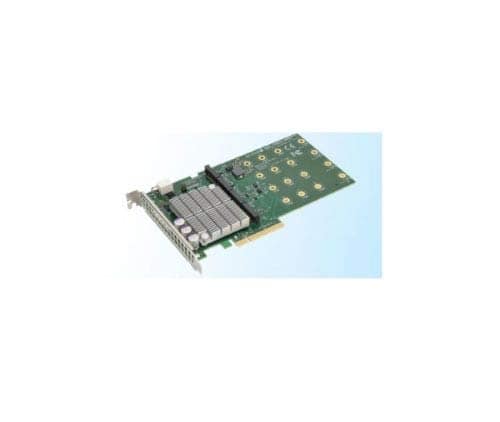
The Supermicro AOC-SHG3-4M2P add-on card is a solid option for users who need to expand their storage capabilities with multiple M.2 NVMe drives.
Pros
- Supports four M.2 NVMe SSDs in a single PCIe slot
- Compatible with both desktop and laptop systems
- PCIe 3.0 x8 interface ensures good bandwidth for drives
Cons
- Higher price point compared to simpler expansion cards
- Limited customer feedback available
- Full-height design may not fit in smaller cases
This expansion card from Supermicro lets users add four M.2 NVMe SSD slots through a single PCIe 3.0 x8 slot. The card works well for people who need more storage options but have limited motherboard M.2 slots. Users can significantly boost their storage capacity without needing to replace their entire system.
The AOC-SHG3-4M2P has shown good performance in server environments. One TrueNAS Core server user reported that the card works well in their setup. The PCIe 3.0 x8 interface provides enough bandwidth to support multiple NVMe drives, though speeds will be shared across all connected devices.
While customer feedback is limited with only two ratings, the 4.4-star average suggests users are generally satisfied. The card’s full-height design fits standard desktop cases but might not be suitable for compact systems. For professionals working with large files or anyone running storage-intensive applications, this expansion card offers a straightforward way to add more high-speed NVMe storage to their system.
Supermicro RAID Controller Card
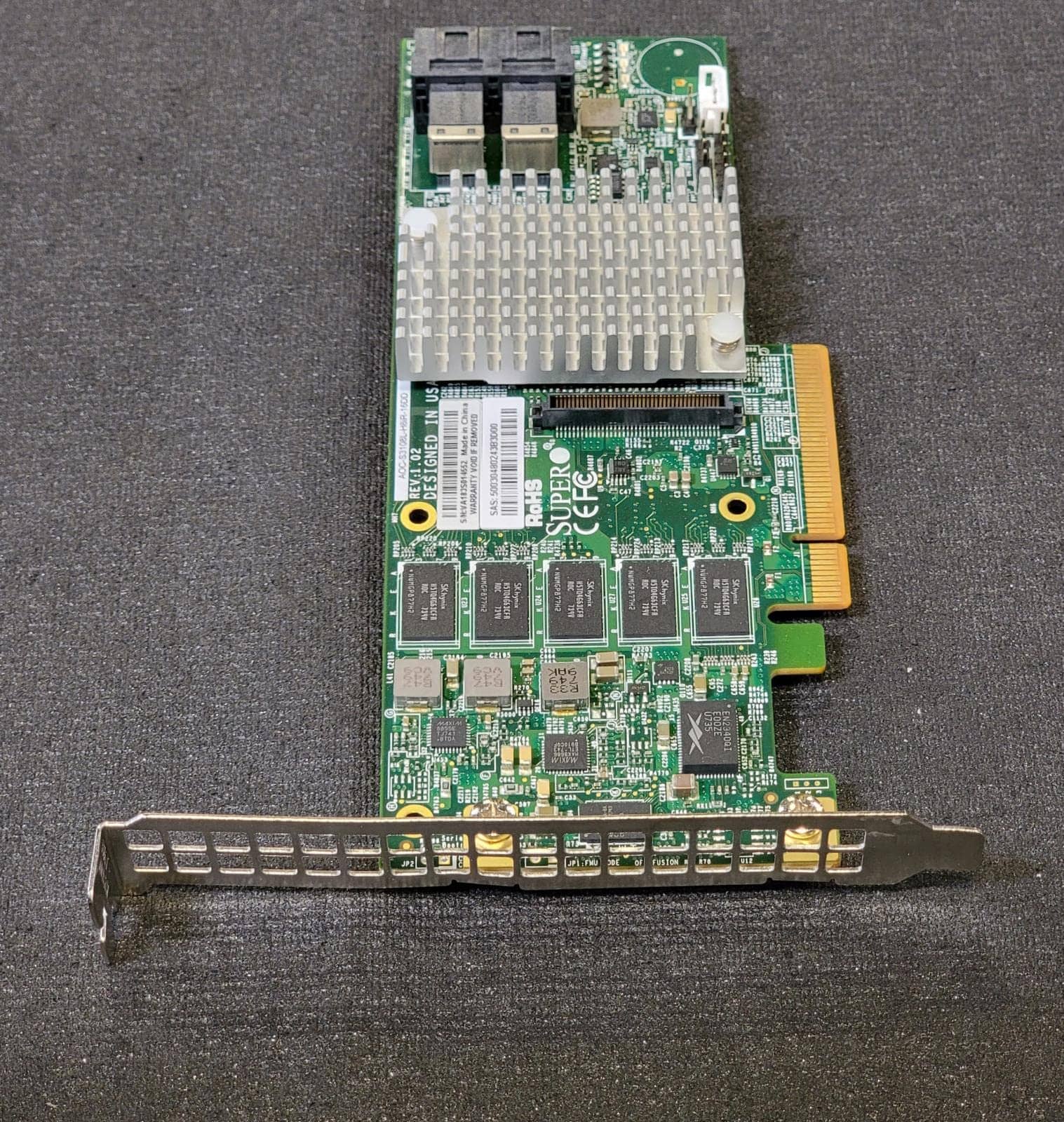
This Supermicro RAID controller delivers exceptional performance and reliability for servers needing advanced storage management capabilities.
Pros
- Supports multiple RAID configurations (0, 1, 5, 6, 10, 50, 60)
- Fast 1.2 GBps throughput for demanding applications
- Compatible with numerous server models
Cons
- Higher price point than basic controllers
- Requires proper system compatibility checking
- Limited customer reviews available
This 8-channel RAID controller from Supermicro offers impressive specifications for server environments. The AOC-S3108L-H8IR-16DD supports both SATA 6Gb/s and SAS 12Gb/s connections, making it versatile for different storage needs. Its PCIe 3.0 interface ensures quick data transfer at rates up to 1.2 GBps.
Server administrators will appreciate the wide range of RAID configurations available. The card handles essential RAID 0 and 1 setups as well as more advanced options like RAID 5, 6, 10, 50, and 60. This flexibility allows users to balance performance, capacity, and data protection according to their specific requirements.
Compatibility stands out as another strength. The low-profile design fits into many server chassis types including PowerEdge, Precision, and various R-series servers. Linux operating system support further extends its usefulness in enterprise environments. For organizations needing reliable storage management with strong data protection options, this Supermicro add-on card represents a solid investment.
Cablecc USB 3.0 to mSATA Adapter
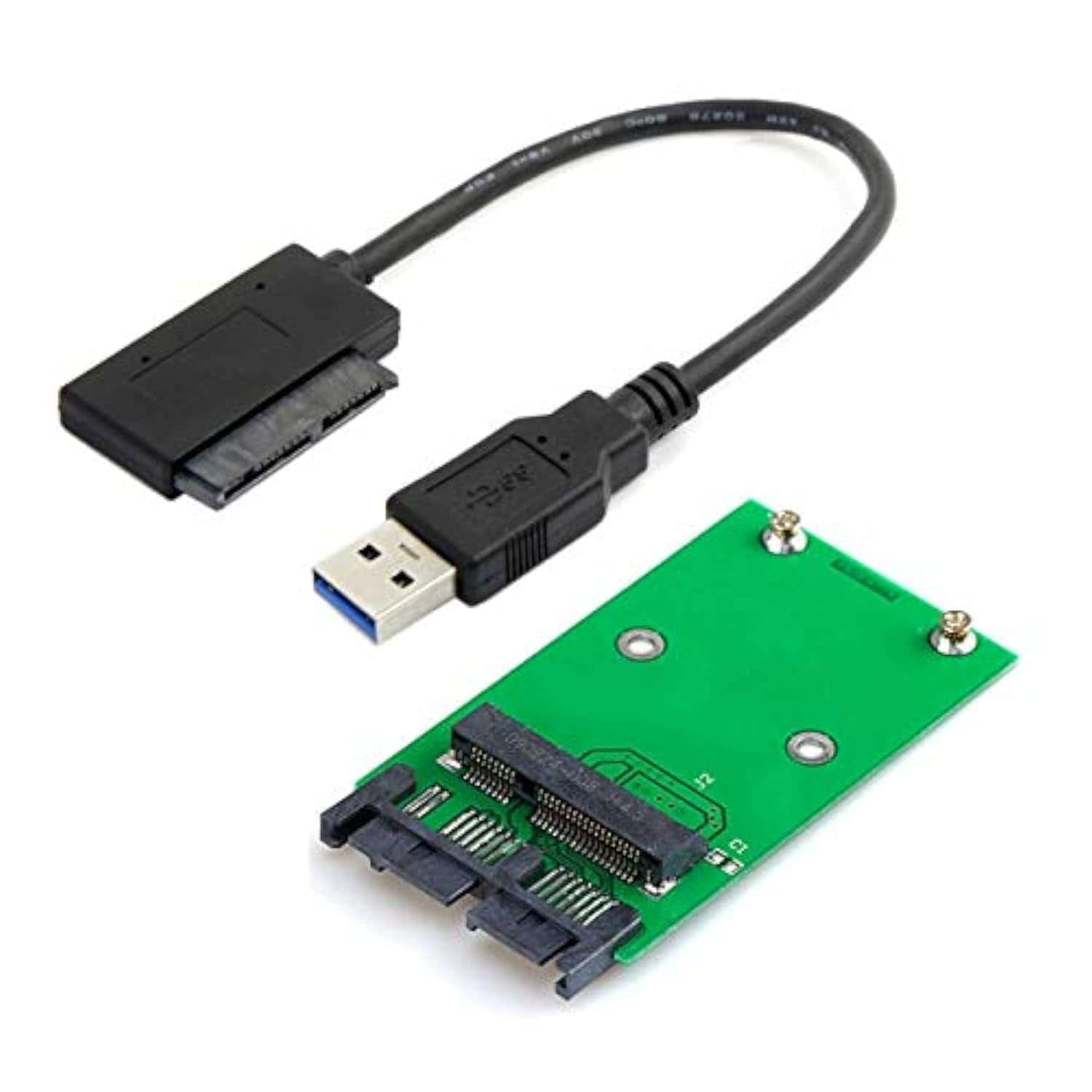
This adapter card offers a simple solution for connecting mSATA and micro SATA SSDs to your computer via USB 3.0.
Pros
- Fast USB 3.0 data transfer speeds up to 5Gbps
- Compatible with both mSATA and 1.8″ micro SATA drives
- Includes necessary cable in the package
Cons
- No LED indicator to show drive activity
- May not work with drives requiring 5V power
- Some users report compatibility issues with certain drives
The Cablecc adapter provides a handy way to access data from mSATA and micro SATA solid-state drives. The card supports the USB 3.0 standard with speeds up to 5Gbps, making it suitable for quick file transfers or data recovery tasks. Users won’t need to buy extra cables since the package includes both the adapter card and connection cable.
One drawback is the lack of any LED indicators to show when the drive is active. This means users can’t easily tell if the drive is being read or written to. The compact size makes it portable, though this comes at the cost of some features found in larger adapters. Some reviews mention that drives requiring 5V power might not work properly since the adapter only provides 3V from the USB line.
Most positive reviews highlight the adapter’s reliability across different devices. The adapter measures just 3.94 x 3.94 x 0.39 inches and weighs about an ounce, making it easy to carry. For users who need occasional access to mSATA or micro SATA drives without installing them inside a computer, this adapter offers a budget-friendly option that works well for basic data transfer needs.
Buying Guide
Choosing the right add-on card requires understanding your needs and system compatibility. Here’s what to consider when shopping for these expansion devices.
System Compatibility
Make sure the add-on card works with your computer. Check these key factors:
- Interface type (PCIe, PCI, etc.)
- Physical slot size available in your system
- Power requirements
- Operating system compatibility
Your motherboard manual can help you find this information.
Purpose and Performance
Think about why you need the add-on card. Different uses need different features.
Graphics cards need good memory and processing power. Sound cards should have clean output and input options. Network cards need proper speed ratings.
Technical Specifications
| Feature | What to Look For |
|---|---|
| Form Factor | Full-height vs. low-profile |
| Power Draw | Wattage requirements |
| Cooling | Passive or active cooling options |
| Ports | Number and types of connections |
Budget Considerations
Price ranges vary widely based on performance. Entry-level cards cost less but offer fewer features. High-end cards cost more but deliver better performance.
Set a budget before shopping to narrow your options. Sometimes paying a bit more gives you much better performance.
Future-Proofing
Buy a card that will meet your needs for several years. Look for cards with the latest technology standards when possible.
Consider whether the manufacturer offers driver updates regularly. Good support means longer usable life.
Frequently Asked Questions
Add-on cards expand your computer’s abilities with various features. Here are answers to common questions about these expansion options.
What are the different types of PCIe expansion cards available?
PCIe expansion cards come in many types to meet different needs. Graphics cards boost gaming and video editing performance. Sound cards improve audio quality for music production or entertainment.
Network cards add wired or wireless connectivity options. Capture cards let you record video from external sources like game consoles or cameras.
Storage cards such as NVMe adapters provide extra high-speed storage connections. USB expansion cards add more ports when you run out of connections.
Which factors should be considered when selecting the best add-on cards for a PC?
Compatibility with your motherboard is essential. Check if you have available PCIe slots and what sizes they are (x1, x4, x8, or x16).
Power requirements matter too. Some cards need direct connection to your power supply, while others draw power from the PCIe slot.
Your specific needs should guide your choice. For gaming, prioritize graphics cards. For content creation, consider capture cards or specialized audio solutions.
Budget constraints will narrow your options. Premium cards offer better performance but cost significantly more than basic models.
How does installing a PCIe card for Bluetooth enhance computer functionality?
A Bluetooth PCIe card enables wireless connections to headphones, speakers, keyboards, and mice. This reduces cable clutter on your desk and increases mobility.
These cards typically support multiple simultaneous device connections. You can pair your headphones, game controller, and smartphone at the same time.
Modern Bluetooth cards offer improved range and stability compared to older built-in solutions. They often include the latest Bluetooth standards for better compatibility with new devices.
What are the benefits of using a PCIe expansion card with USB-C connectivity?
PCIe USB-C cards add high-speed data transfer capabilities to older computers. This allows connections to modern external drives, displays, and other peripherals.
These cards often support Power Delivery, letting you charge laptops and smartphones directly through the USB-C ports. This reduces the number of chargers you need.
Thunderbolt compatibility in some USB-C expansion cards enables daisy-chaining multiple devices through a single port. This feature is valuable for connecting external graphics enclosures and professional equipment.

